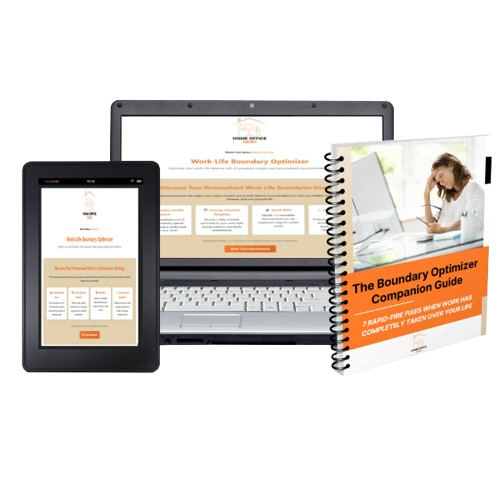That feeling when you close your laptop at 6 PM, but your mind is still racing through tomorrow’s client presentation whilst helping your daughter with her maths homework? I get it. The work-life boundary blur is real, and it’s exhausting.
After spending years learning this lesson the hard way—from my rugby days where mental recovery was crucial, to building my agency whilst being present for my family—I’ve discovered that mental rejuvenation isn’t just about rest. It’s about intentional practices that help your brain make the shift from professional mode to family mode.
Why Your Brain Struggles to Switch Off
Here’s what nobody tells you about remote work: your brain doesn’t recognise the difference between your kitchen table-office and your kitchen table-family dinner spot. Without the physical commute that once signalled “work is done,” your mind stays stuck in professional problem-solving mode.
The cost? You’re physically present for bedtime stories but mentally reviewing that awkward client call. Your family gets half of you, and frankly, that half feels guilty about not being fully there.
The Three-Step Mental Reset Protocol That Actually Works
After years of trial and error (and some spectacular failures), I’ve developed what I call the Mental Reset Protocol. These aren’t just nice ideas—they’re practical tools that working parents can implement immediately.
1. Mindful Breathing: Your Mental Circuit Breaker

The simplest reset technique is often the most powerful. When I finish my last client call or hit send on that final email, I take 60 seconds for what I call the “circuit breaker breath.”
Close your eyes. Breathe in for four counts, hold for four, exhale for four. Repeat this cycle five times.
But here’s the key—whilst you’re breathing, mentally tell yourself: “I am transitioning from work mode to family mode.” This isn’t just relaxation; it’s programming your brain to shift gears.
I learned this from my rugby days. Before every match, we’d have moments of controlled breathing to manage pre-game nerves. The same principle applies to managing the work-to-home transition.
2. Light Stretching: Releasing Physical Tension
Your body holds more work stress than you realise. Hours hunched over a laptop create physical knots that keep your nervous system in “work mode” long after you’ve finished.
Take three minutes for these targeted stretches:
- Gentle neck rolls (release the tension from video calls)
- Shoulder blade squeezes (counter that forward head posture)
- Simple spinal twists (reset your core after sitting all day)
During my playing career, I experienced multiple shoulder injuries and back problems. What I learned from physiotherapy was that physical tension directly impacts mental clarity. When your body is tight, your mind struggles to relax.
3. Nature Walks: The Ultimate Reset Button

This is non-negotiable in my daily routine. A 10-15 minute walk outside—without your phone—acts like a factory reset for your brain.
The combination of movement, fresh air, and natural scenery triggers what researchers call “soft fascination.” Your attention shifts from the intense focus required for work tasks to the gentle, restorative focus of observing your environment.
Growing up in Wales, I learned that time outdoors isn’t a luxury—it’s essential maintenance for your mental health. Even when I’m buried in client work or course creation, that walk happens. No excuses.
The Real Challenge: Making It Stick
The hardest part isn’t learning these techniques—it’s creating the consistent boundary that protects this transition time.
Here’s what I’ve observed working with hundreds of remote professionals: the parents who successfully switch off are the ones who treat this transition time as seriously as they treat client meetings.
Your family deserves the best version of you, not the mentally exhausted, still-processing-work version. And here’s the thing that took me years to understand: protecting your mental energy actually makes you more productive the next day.
When Life Gets in the Way
When you prioritise your mental health as a working parent, something remarkable happens. Your kids see a model of what healthy work looks like. Your spouse gets a partner who’s present, not just physically there but mentally available.
Your clients get better work because you’re showing up as your best self, not a depleted version running on fumes and caffeine.
But here’s what changed everything for me: I stopped apologising for having boundaries. Instead of saying, “Sorry, I can’t take calls after 7 PM,” I started saying, “I’m available until 7 PM and first thing tomorrow morning.” Same boundary, different energy.
Your Next Steps
Pick one technique. Just one. Try it for a week and notice the difference.
If the breathing resonates, set a phone alarm for the same time each day. If stretching appeals, keep a simple routine by your desk. If walking calls to you, put your trainers by the door as a visual reminder.
The goal isn’t to become a meditation guru or flexibility expert. The goal is to create space between work-you and family-you. That space, even if it’s just three minutes, changes everything.
What’s your biggest challenge with switching off after work? The struggle is real, but so is the solution. You don’t have to figure this out alone.
Remember—achieving proper work-life boundaries isn’t selfish. It’s essential. Your family needs you present, and your business needs you sharp. Both require a mind that knows how to properly recharge.










